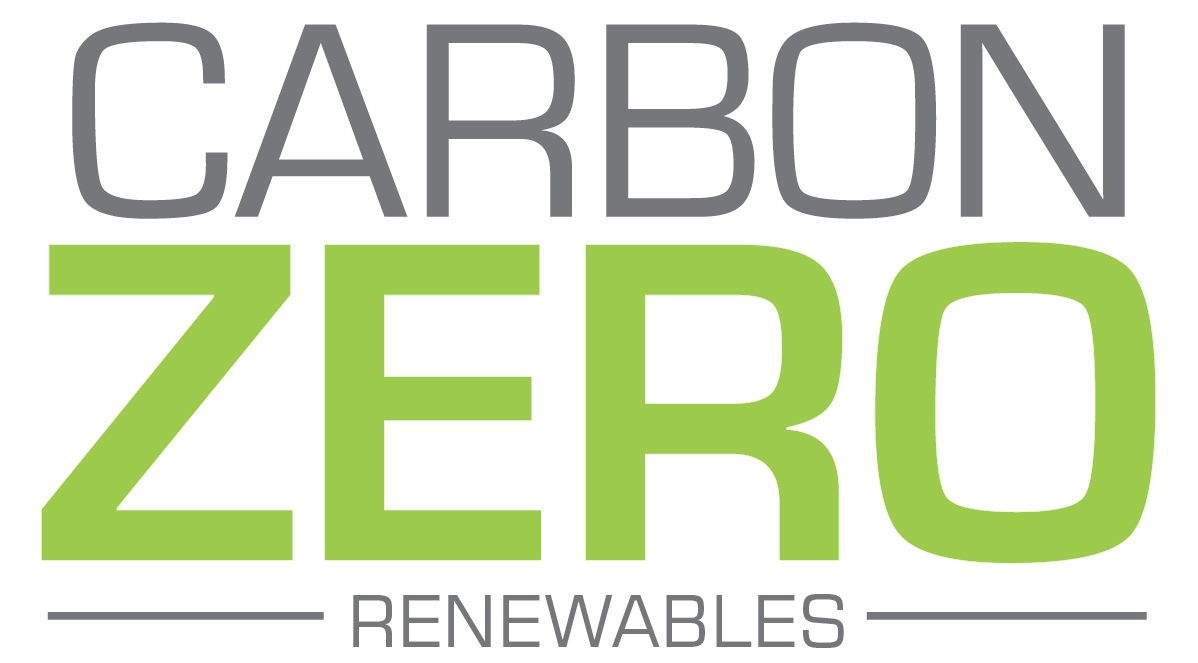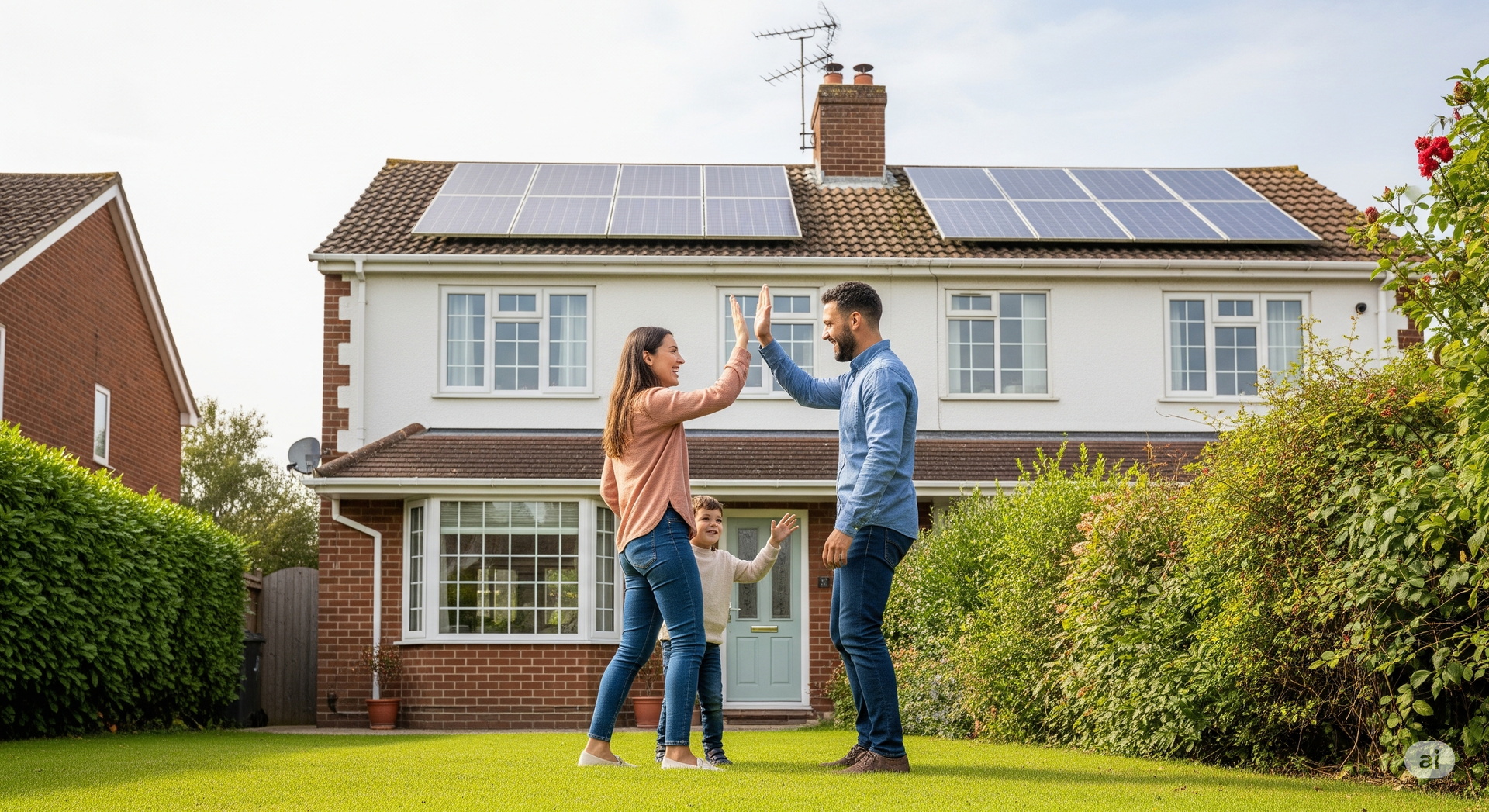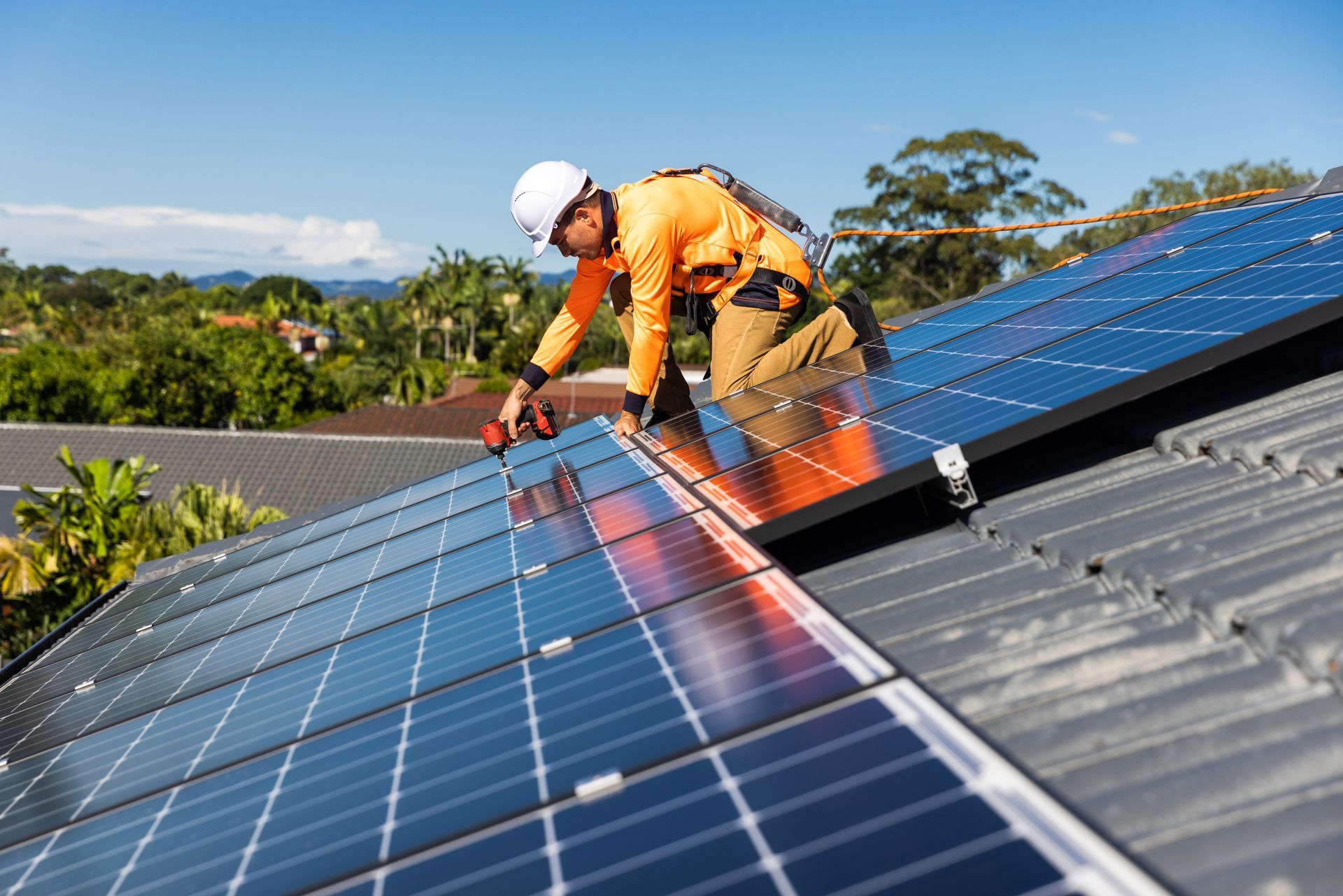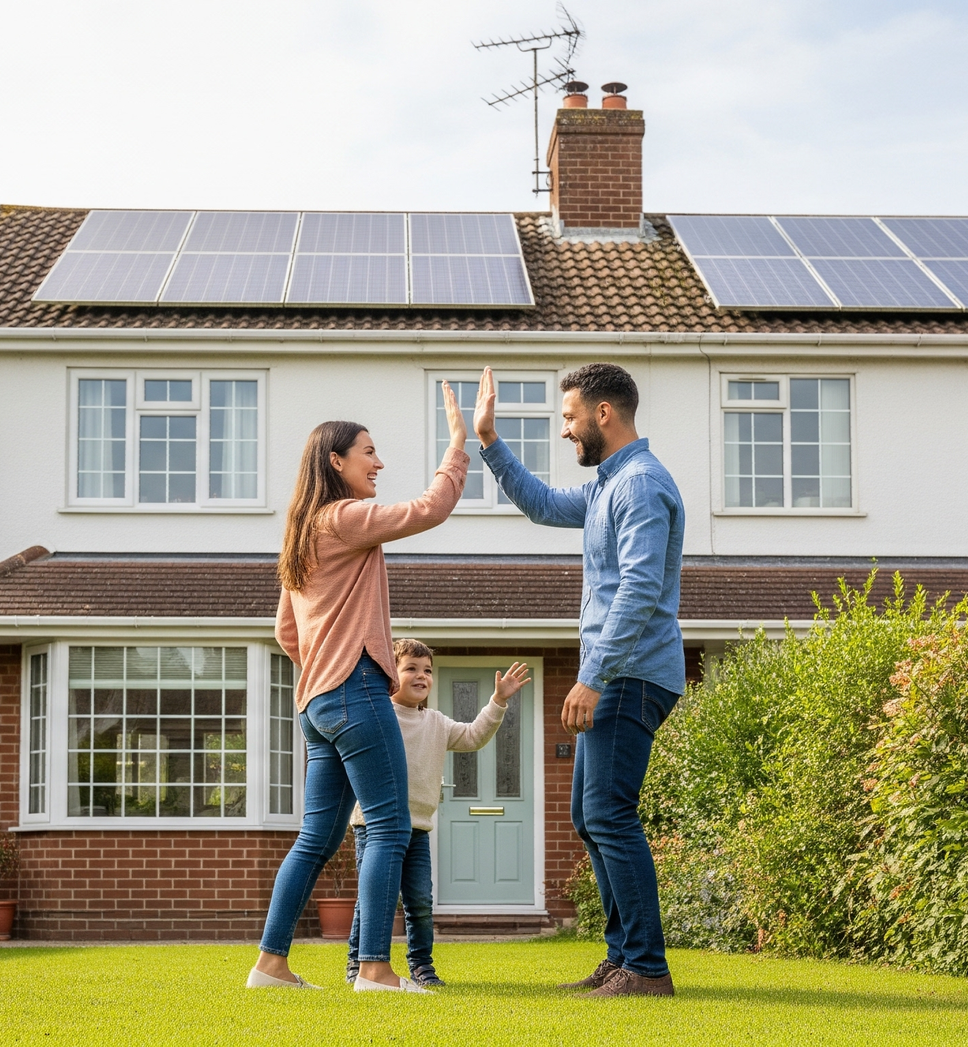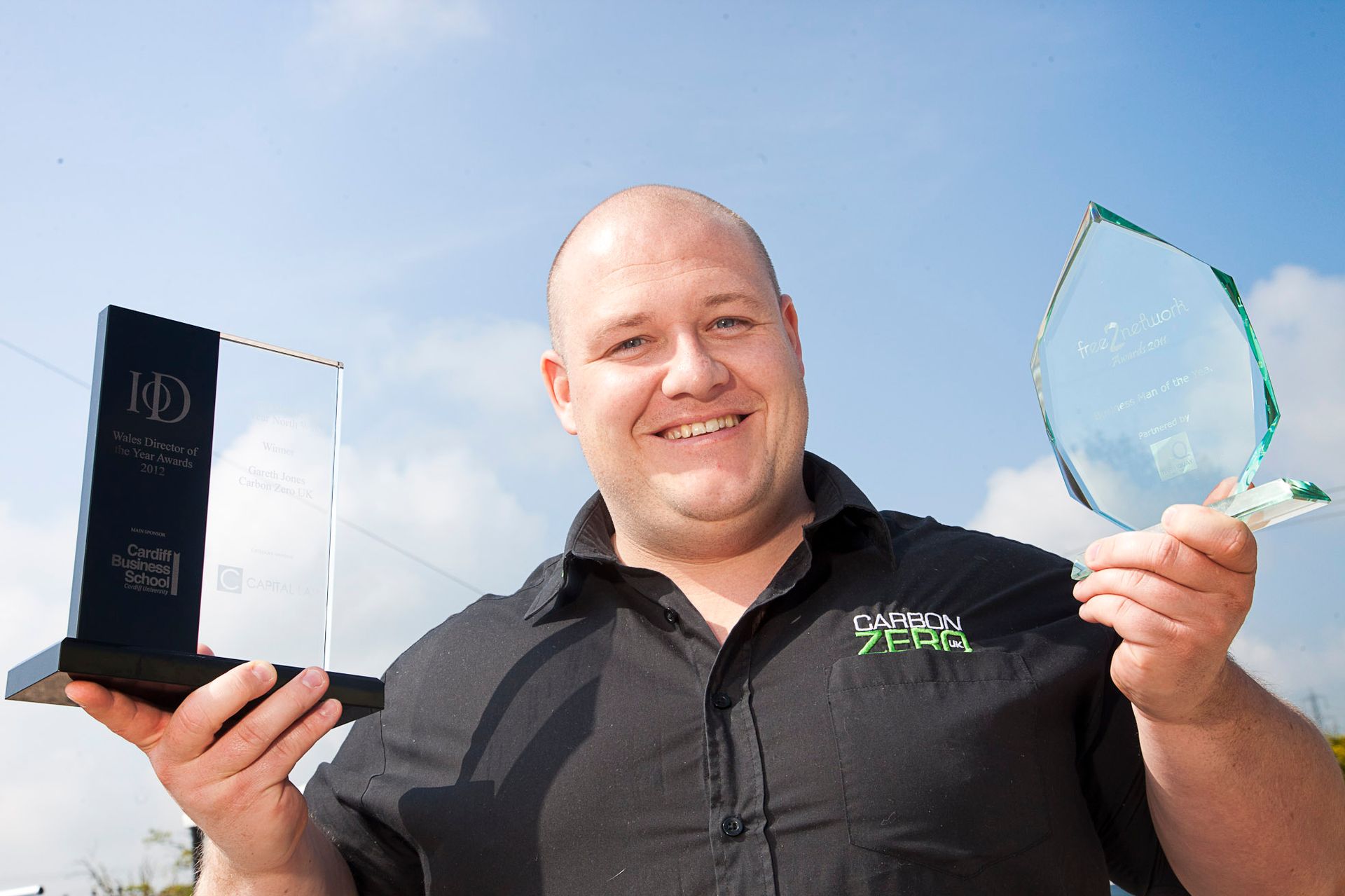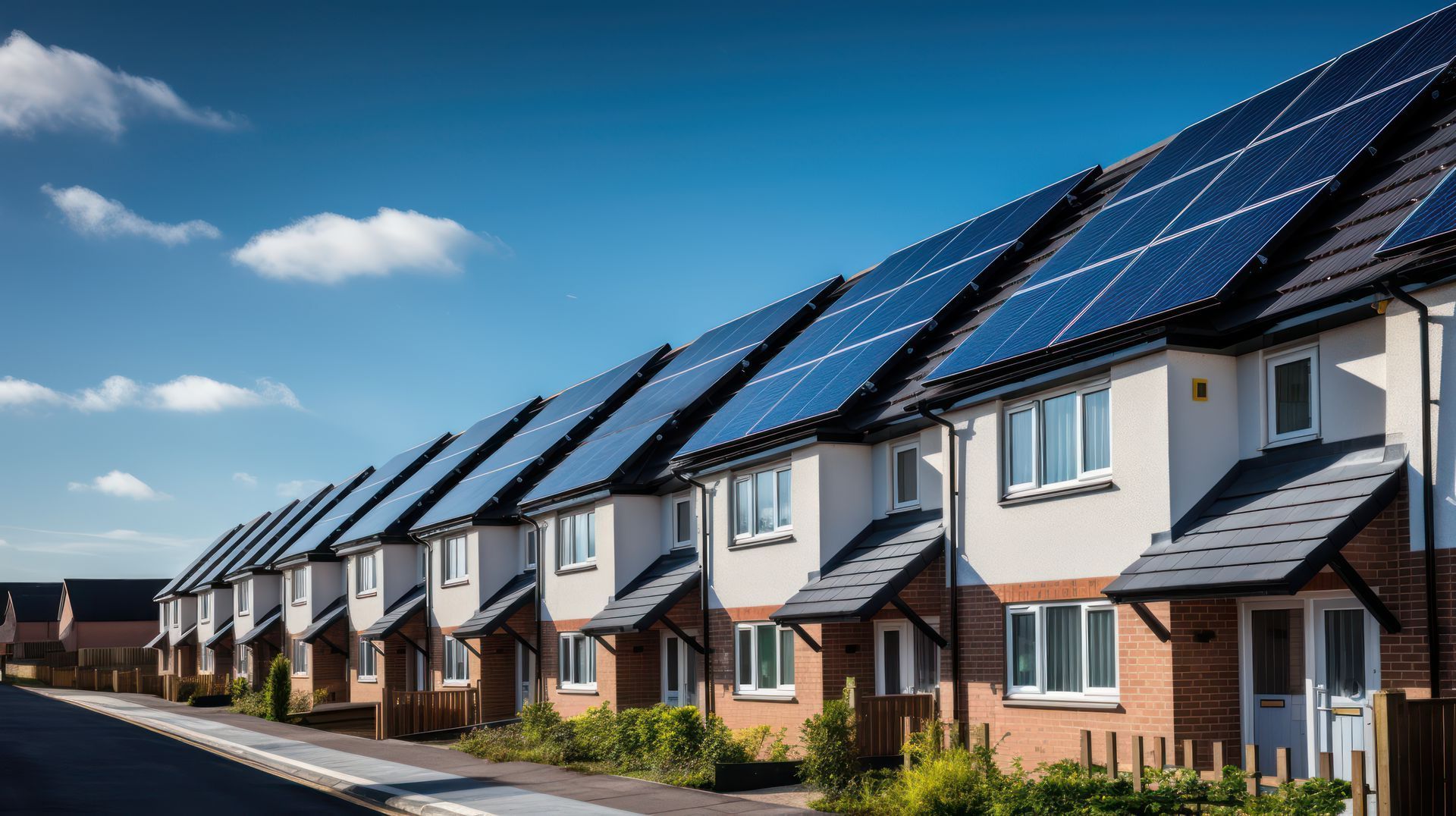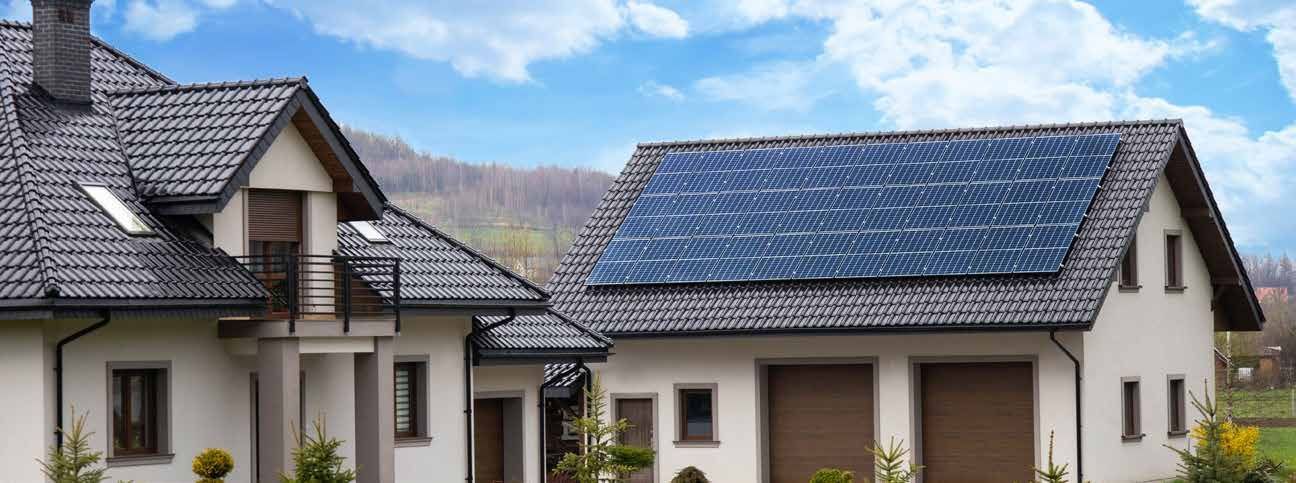Solar panels cannot produce electricity at night because they need daylight to function. During darkness, homes and businesses without battery storage draw electricity from the National Grid. However, with a solar battery storage system, you can use energy generated during the day to power your property at night, reducing or even eliminating your reliance on grid electricity.
To understand why solar doesn’t work at night, you need to know how photovoltaic (PV) technology operates. PV panels are made of semiconductor materials, most commonly silicon, that generate an electrical current when exposed to photons — particles of light. During daylight, these photons excite the electrons in the panel’s cells, creating direct current (DC) electricity. An inverter then converts the DC into alternating current (AC), which powers your lights, appliances, and devices.
When the sun sets or it’s completely dark, there are no photons available to trigger this process, so the panels stop producing electricity. At this point, your system either switches automatically to grid power or, if you have a battery, begins drawing stored energy.
Battery storage is the key to making solar useful at night. If your solar system generates more electricity during the day than you use, a battery can store that surplus. Later in the evening, instead of pulling expensive electricity from the grid, you simply use your own stored solar power. This not only increases your energy independence but also maximises your financial savings because you’re offsetting electricity at peak rates.
For example, a household that uses 12 kWh of electricity daily might generate 18 kWh on a sunny day. Without a battery, any excess beyond what you use instantly is exported to the grid — earning you Smart Export Guarantee (SEG) payments, but usually at a much lower rate than the retail electricity price. With a battery, you can store that extra 6 kWh and use it later, effectively replacing electricity that might cost 25–35p per kWh with energy you’ve already produced for free.
Some battery systems are now “grid-interactive,” meaning they can be charged from the grid during cheap off-peak hours and discharged during expensive peak times, adding another layer of savings. Others can be configured to operate in “island mode” during a power cut, allowing critical appliances — like fridges, lighting, or Wi-Fi routers — to keep running. Most standard systems, however, will shut down during an outage for safety reasons unless paired with specialist backup hardware.
Another point worth noting is that while solar panels don’t work at night, they can still be part of a 24-hour renewable energy solution. Some households and businesses pair solar with wind turbines or hydro systems, which can generate power at night when solar is inactive. This hybrid approach ensures that renewable generation continues even after sunset.
In conclusion, solar power’s inability to work at night is easily overcome with modern battery storage technology. A well-designed solar-plus-storage system means you can enjoy the benefits of your own clean, renewable energy day and night, lowering bills, increasing energy independence, and adding resilience to your home or business energy supply. With the continuing rise in electricity prices, this combination has become one of the smartest long-term energy strategies available in the UK.

